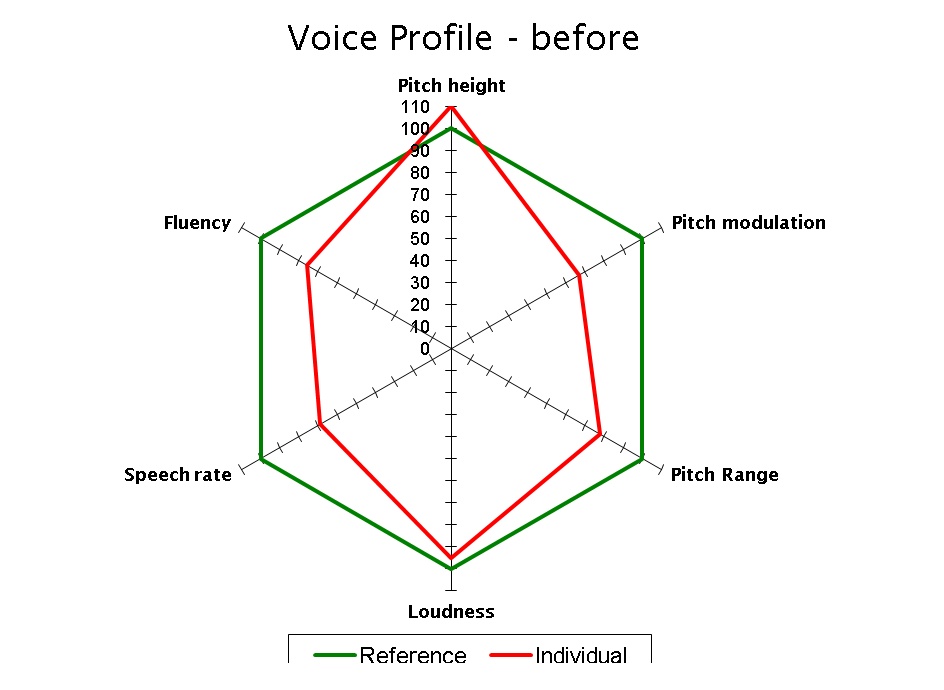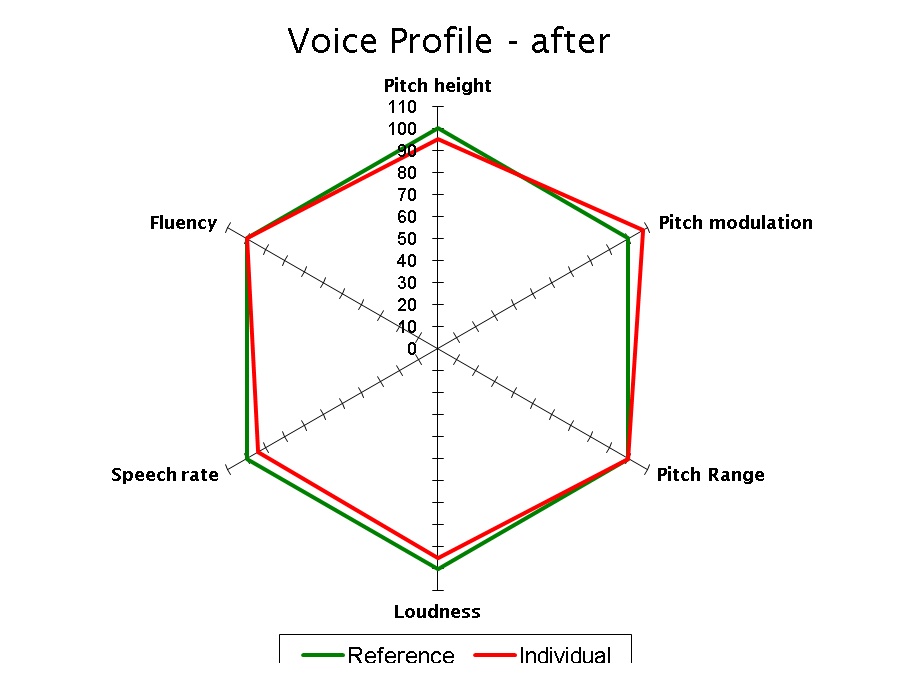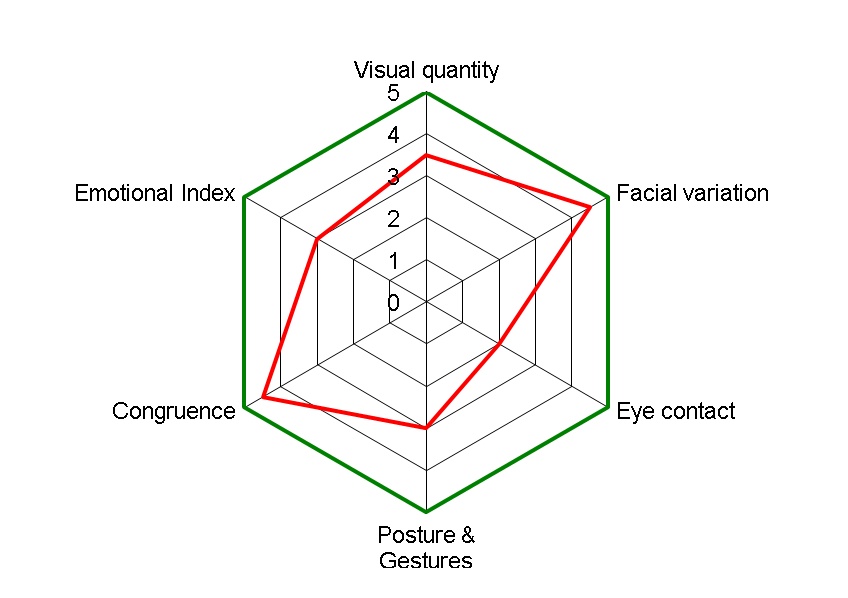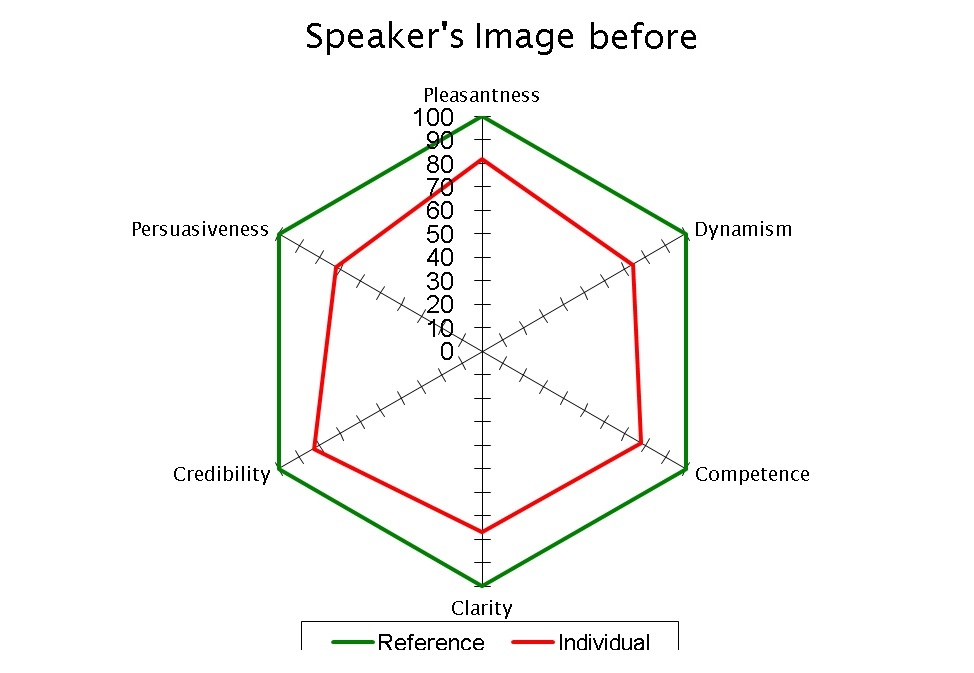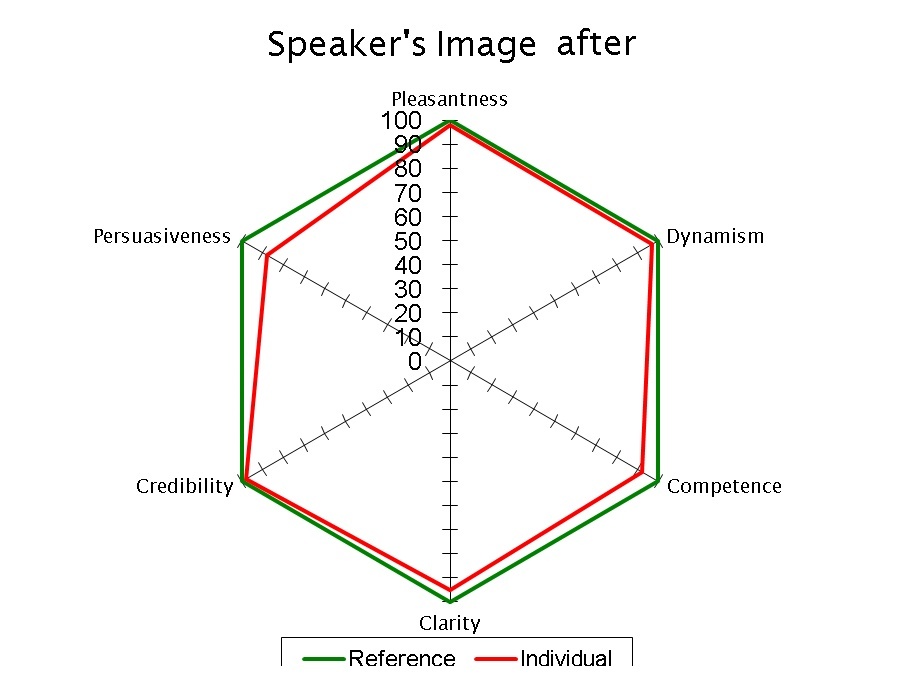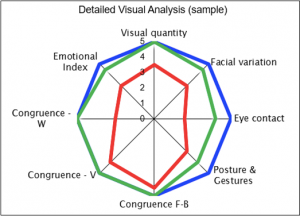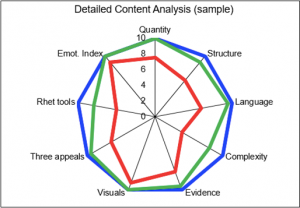Scientific Analyses
A key service that we provide is the ability to measure scientifically the content, voice and visual (non-verbal) aspects of someone’s communication. This allows us and our clients quickly to see how good they are at the various components of their communication.
This service is unique to GPB, there are no other organisations in the world that provide these three analyses.
Voice Analysis

The way we look and sound are powerful tools for persuasion and leadership, but they are not always used to their maximum.
They are very complex; they encode the speaker’s personality, attitudes, style and emotions. We usually find it easy to detect when someone is sad, angry, positive or bored by listening to the inflection and timbre of their voice.
However, measuring precisely and analysing the way an individual uses his or her voice, face and body is a difficult task and – like most coaching tips – has until recently been entirely subjective – the opinion of the observer And yet the way the voice, face and body are used are key areas where we can enhance performance with dramatic effect.
Grant Pearson Brown Consulting Ltd, along with Dr Branka Zei, a colleague from the Vox Institute in Geneva, can help you to understand the use of your voice, face and body to help you to communicate more effectively.
In short, to be more persuasive, we are able to measure and examine the vocal and visual communication on a scientific level in order to produce scientific, objective and precise voice and visual analysis reports. By the end of your coaching, you will notice a dramatic difference in the persuasiveness and the overall pleasantness by comparing the before and after recordings.
Here’s how it works:
We record your voice, (one sample or four samples). Then our Associate in Geneva produces a written ‘Voice Report’. These can either be ‘Short Reports’ (one sample) or ‘Detailed Reports’ (four samples). We use computer software to ‘map’ certain vocal parameters, such as pitch, speech rate, loudness and fluency.
The Detailed Report includes an assessment of the Speaker’s Image, including a measurement of Persuasiveness. The Reports help us to target specific areas of improvement in order for you to make the most out of your voice.
Voice coaching
Visual Analysis
Our experts at GPB can analyse and coach you on your body language and facial expressions so that your actions emphasise and support your words.
Congruence looks at whether the facial expressions, and other non-verbal communication such as body language, match the semantics (the words spoken) and the sound of the voice.
We make video recordings of the same samples that are used in voice analysis, using both wider angle to show body language, and close-ups to show facial expression and analyse the contents using the FACS method (Facial Action Coding System) created by Prof. Paul Ekman (University of California).
Content Analyses
In 2011 we completed the innovative construction of the first version of our Content Analysis tool, and we have developed it forwards in the time since then. This completed our ‘triple’ analysis capabilities, so that we can now analyse scientifically what you say (Content), how you sound (Voice) and how you look (Visual).
The parameters that we created for Content Analysis were derived from a long starting list of over 50 metrics that we thought worthy of measurement and/or further consideration. We reduced the list to the top 8 parameters that we observed made the biggest difference to the quality of the content.
Here’s how it works:
- We take a sample of content, which can be from any source such as the text of a written document, the transcript of a speech or presentation, or a web page. We then do the analysis using the 8 parameters.
- Measurements are compared with the most relevant reference group, comprised of a sample of the most effective spoken and written content. One reference sample operates for the written word, and a different one for the spoken word.
- A report is then compiled with suggestions on areas to develop. It also shows where the content is already of a comparable standard to the best produced by the reference sample. This focuses the recommendations and advice we give on the content alone, allowing quicker, repeatable and more sustainable gains to be achieved.
Our analysis is based on the work of rhetoricians from Aristotle and Cicero to Petty & Cacioppo and beyond.
Here’s a sample of the input and output measurements made with our Content Analysis:
For an opportunity to try out one of our Content Analysis tools, grab some clean text and click here

